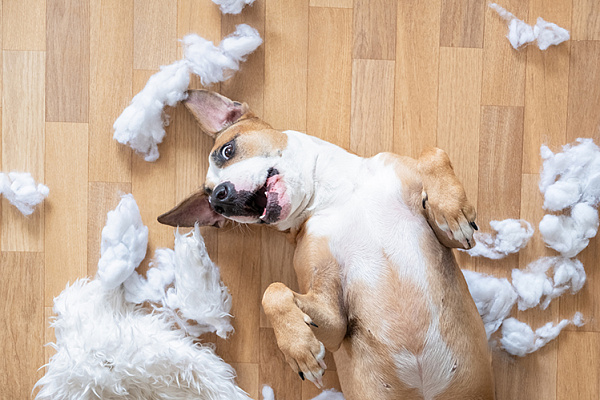
Parvovirus is a tiny infectious pathogen that primarily affects the gastrointestinal tract of dogs. Parvo in dogs can cause severe illness and death in some cases. This article discusses identifying symptoms, treatment options, and ways to prevent your dog from getting sick if it has parvo disease.
There are many reasons why dogs get parvo disease. This infectious pathogen is present everywhere in the environment, transmitted via the fecal-oral route, meaning that it can be transmitted through contact with contaminated feces or surfaces where this has happened. The virus is resistant to heat and cold, making it even more infectious for your dog. Parvovirus is transmitted easily by the ingestion of infected feces.
What is Parvo?
Parvo is a very serious virus that causes the dog’s cells to attack themselves. It attacks the dog’s blood, intestines, and stomach. Puppies between 6 weeks old and 6 months of age are the most likely to get it, but older dogs can get it too. It can sometimes be fatal. If you think your dog has it, the best thing you can do is to take them to the vet right away. The vet will run some tests to see if it is Parvo. If your pet has Parvo, the vet will try to give them fluids to take away some of the symptoms, but there is no cure. The virus attacks very quickly. There are only 2 things that have worked in slightly less than half of all cases:
- Two shots spaced 3 days apart and given within the first 20 days of exposure to the virus, plus antibiotics.
- A very expensive treatment involves giving the dog a transfusion directly from a dog immune to Parvovirus (not affected by it).
Why and How Do Puppies Get Parvo?
Puppies are very young dogs, usually about six to eight weeks old. The mother dog has developed antibodies to protect them from diseases, but for the first two or three weeks, they have no own immune system. Puppy parvo is a virus spread through contact with feces and bodily fluids of an infected animal. A female dog usually gives birth to 6-10 puppies.
Puppies are born without any natural immunity to disease. Therefore, they are very susceptible to diseases spread by viruses or bacteria. This is especially true in the first few weeks of their lives when they have not yet received any vaccinations. Most puppies contract this fatal disease within the first three weeks of life. Puppies that have been injected with the parvovirus vaccine and then exposed to an infected dog may not come down with the virus.
Signs and Symptoms of Parvo in Dogs. How Long Are Puppies with Parvo Contagious?
The symptoms associated with Parvovirus are dependent on how much your dog has been exposed to the infectious pathogen, when it was exposed and whether or not your dog has any other comorbidities or pre-existing medical conditions that may make it more susceptible to the disease. The symptoms that are associated with parvo infection in dogs include:
- Vomiting
- Diarrhea (bloody)
- Lethargy, fatigue, and loss of energy
- Fever & Losing appetite
- Causes for Parvo in Dogs
The most common cause for Parvovirus in dogs is when a dog has been in contact with contaminated feces. If you suspect your dog has parvo disease, the most likely way it became exposed to this infectious pathogen was through direct or indirect contact with an infected dog’s feces.
Puppies with Parvo are generally contagious until they no longer show signs of the disease. The average range is between two and four weeks after contracting it. When in doubt, observe your pup for an additional week before taking it back to its home or in public areas frequented by other dogs.
Treating Parvo in Dogs.
For mild cases of Parvo, the dog’s diet is usually changed to high-quality food that does not contain preservatives or by-products. For moderate cases, intravenous (IV) fluids are administered to rehydrate the dog. The IV fluid should replace the initial water deficit plus ongoing losses for 6-8 hours.
Antibiotics are also commonly prescribed to prevent secondary infections caused by bacteria. These antibiotics usually come in tablet form and can be given twice a day for 5-7 days. Intravenous fluids are continued for the first 24 hours so that they can also have sufficient fluid intake.
If the dog is too dehydrated, IV fluids may need to be given to restore normal blood pressure and heart rate. The dog might develop hypovolemic shock if it gets too dehydrated. The dog may need to be placed in intensive care for severe cases. The IV fluids are usually continued for 24-72 hours or until the dog can drink water on its own again.
If the dog cannot receive IV fluids, it would be given medication that will induce vomiting, which can help remove any contents in the digestive system. The dog is not allowed to eat or drink anything after administering this medication.
Prevention of Parvo in Dogs
The importance of a puppy’s first vaccination cannot be overestimated. The time between the injection and the pup’s immune response is about two weeks. During this period, a dog can succumb to Parvovirus infection without showing any symptoms at all. Any pups who survive a parvovirus attack are usually left with permanent damage, which may be physically and mentally crippling.
An ounce of prevention is worth a pound of cure. Pick up after your dog and properly dispose of feces and urine at all times. If you walk your dog in public areas such as parks, keep him leashed but make sure the leash does not drag on the ground— this can transfer Parvovirus-laden feces onto your shoes. Wash your hands before and after touching your dog. If you have children, teach them about the dangers of playing with other people’s pooches in public places where they are likely to become contaminated by Parvovirus. Do not let children handle or pet wild animals which can carry the virus. If you walk in the woods or any area where wild animals live, do not let your dog sniff around.


